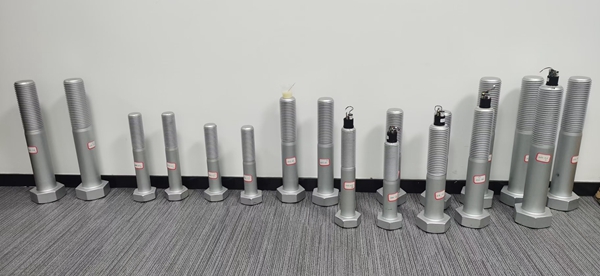News Center
Stay up to date with Theta’s latest innovations and progress
Search the whole station
Stay up to date with Theta’s latest innovations and progress
As wind power continues to grow as a key component of China’s clean energy strategy, ensuring the structural integrity and operational safety of wind turbines has become increasingly important. Among all mechanical connections in a wind turbine, bolts play a critical role—securing tower sections, blades, hubs, and main shafts. Improper bolt installation and maintenance have become a leading cause of equipment failure in the industry.

Data shows that over 50% of wind turbine malfunctions are caused by bolt failures, including loosening, loss of preload, and breakage. These failures often lead to structural instability, vibration issues, and even catastrophic damage. Bolt preload values—and their consistency—are key to ensuring a safe and balanced mechanical connection. Excessive or insufficient preload can both result in safety hazards, including bolt fatigue, thread stripping, or outright fracture.
While China has established mature standards for bolt manufacturing, such as GB/T 5780 and GB/T 3098, there is currently no national standard specific to the installation and maintenance of bolts in wind turbines. Most turbine manufacturers rely on internal technical documents or adapt international standards, leading to inconsistencies across different projects. In the absence of a unified guideline, variations in torque tool calibration, preload measurement accuracy, and on-site installation practices have become common, increasing the risk of hidden failures.
At present, bolt inspections are still largely conducted manually, often under difficult and dangerous conditions, with limited visibility into real-time bolt health. This lack of standardized, real-time monitoring increases the possibility of unnoticed loosening, particularly in hard-to-reach locations, making timely maintenance a challenge.
To address this issue, China’s Wind Power Standardization Committee, in collaboration with leading research institutions and turbine manufacturers, is in the process of drafting a new national standard for wind power bolt installation and maintenance. This standard will cover bolt type selection, torque procedures, tightening tool specifications, preload verification methods, inspection intervals, and more. It aims to establish a comprehensive and practical technical framework to ensure safe and consistent bolt installation and long-term maintenance.
The implementation of this standard is expected to drive broader adoption of intelligent monitoring technologies across the wind power sector. For example, Theta’s wireless bolt loosening and preload monitoring solutions are already being deployed in wind tower and hub connections. These systems provide real-time alerts and predictive analytics, allowing operators to detect loosening trends and take preventive action before failure occurs.
As China accelerates its transition toward carbon neutrality, wind power is poised for rapid expansion. The upcoming national standard for wind turbine bolt management will play a pivotal role in reducing risk, improving operational reliability, and supporting the intelligent evolution of the renewable energy sector.
Submission